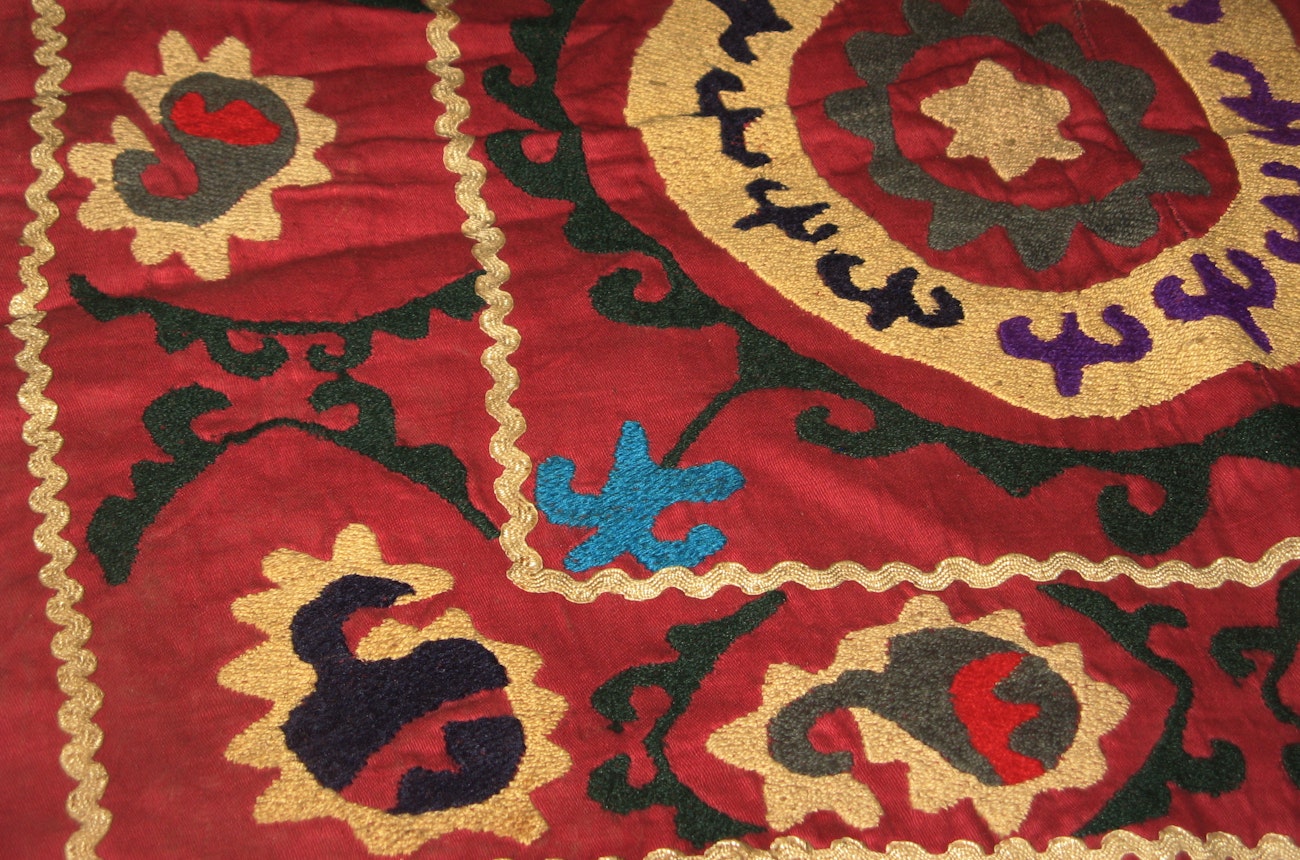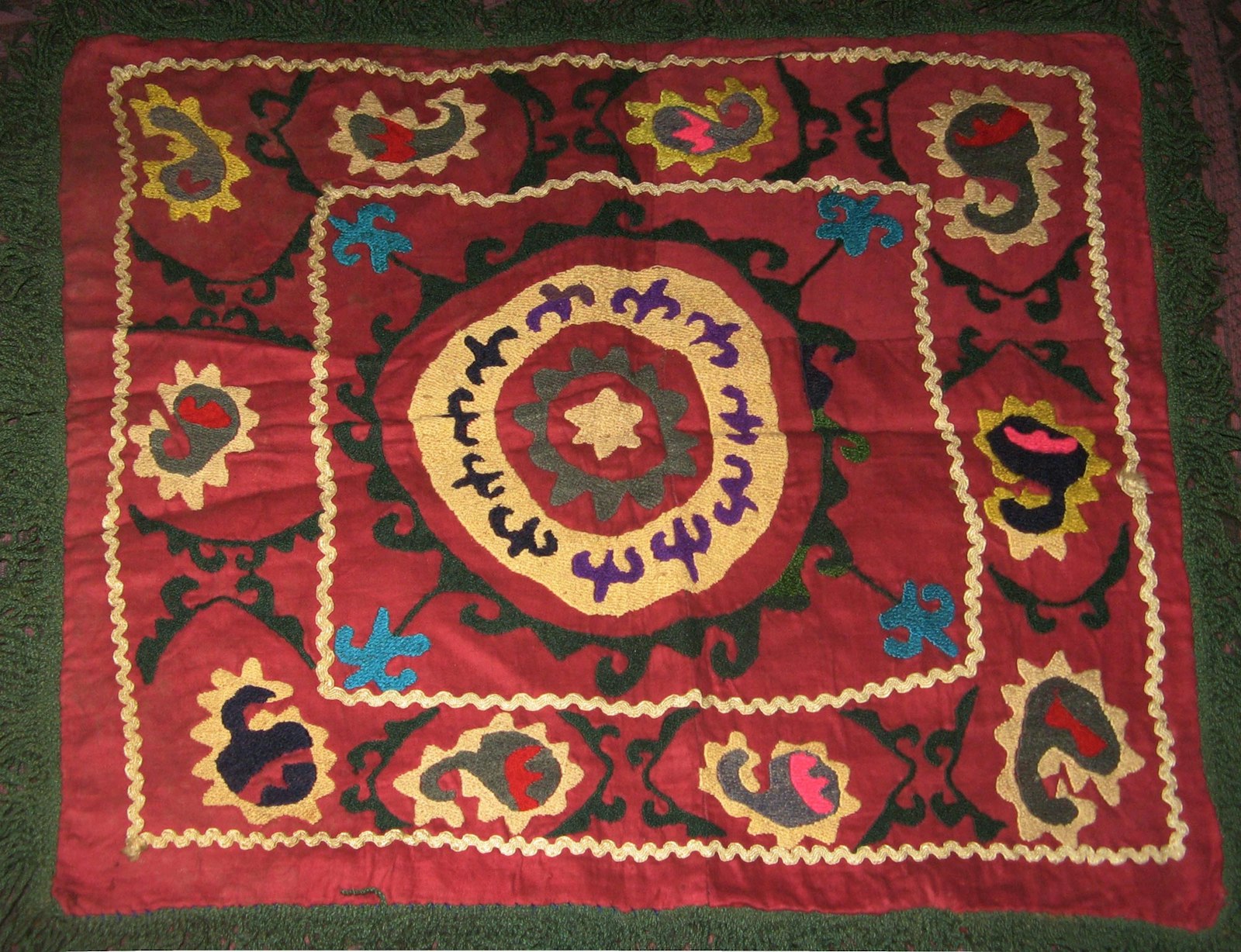Going through one’s textile collection brings back memories of when we were free to travel the world. Perusing my collection recently, I discovered this lovely example of a suzani textile and recalled the occasion when I purchased it.
What is a Suzani?
Suzanis are hand-embroidered textile panels that originated from nomadic tribes in Kazakhstan, Tajikistan, Uzbekistan, and other central Asian countries. I purchased this particular piece from a travelling dealer of suzani textiles. He and another person had come to exhibit at an exhibition of carpets from Afghanistan. My interest was textiles, and these two vendors were the only ones with textiles—both claiming to be from Afghanistan, but some of their wares were from Uzbekistan. After striking a bargain and picking up two textiles from one of them (he was pleasanter and easier to deal with), my father and I went to the stall of the other vendor. Slightly eccentric, he had more respect for my father and his choice, dismissing me as a novice who didn’t know what she was looking for. Using my father as a front, I began the hunt. This vendor’s collection was gorgeous, and my budget allowed me two pieces, one of which I’ve featured here.
When I leisurely went through my purchases at home, I was pleasantly surprised to find that the two suzani textiles were not cushion or pillow covers. Instead, they turned out to be little mat-like pieces. I think they are dastarkhans or cloth embroidered for trays or for the table. Through my research, I have realized that many suzanis were made for decorative purposes, to be hung on the walls of the rooms or to be simply placed around the home. The presence of fringe on this one is the reason that I think it could have been put to use as a cloth for a table or spread on the floor.
Suzanis are dowry pieces embroidered by girls or women to be taken with them to their new home when they are married. They feature a wide range of motifs, from vines and flowers to star medallions and vegetables. What attracted to me to this one was the simple design done on it. The piece has tiny brinjals (aubergines or eggplant) embroidered all around an outer border.

The finely embroidered brinjal (aubergine/eggplant) motifs come in different colors and an unusual color scheme.
The stitches are minute satin stitches. Instead of the typical chain stitch, the center section has some interesting symbols embroidered on it. Store-bought lace and fringe have been attached around the piece. The base cloth is silk, which has frayed over time.
What stands out is the fabulous color combination of the base fabric and, of course, the embroidery, which is done in bright shades, but it does not look jarring. Instead, it’s very colorful and pleasing to the eye.
Chitra Balasubramaniam writes, collects, and experiments with textiles and follows her passions by writing about food, travel, and heritage. She dabbles with stock-investment analysis and research. She also runs a small travel guide at visitors2delhi.com. Find her on Instagram as @visitors2delhi.
Originally published July 14, 2021; updated October 14, 2024.

